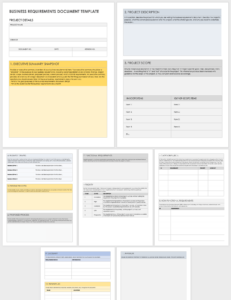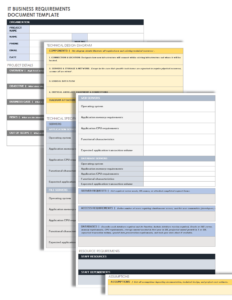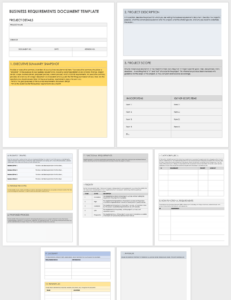Drafting a business requirements document (BRD) is a critical step in ensuring the success of any software development project. It serves as a roadmap, outlining the specific needs and objectives that the software should meet. To streamline this process, we’re excited to provide you with a free business requirements document template.
Our template is designed to simplify the documentation process, making it easy for you to capture all the necessary information. It includes sections for project scope, functional requirements, non-functional requirements, acceptance criteria, and more. By using our template, you can save time, ensure completeness, and improve the accuracy of your BRD.
Essential Elements of a Business Requirements Document
A comprehensive business requirements document should cover the following key elements:
Project Scope: Clearly define the project’s purpose, objectives, and boundaries. Outline the in-scope and out-of-scope features to avoid confusion during development.
Functional Requirements: Describe the specific functionality that the software should provide. This includes both mandatory and optional features, ensuring that the software meets the user’s needs.
Non-Functional Requirements: Specify the technical and operational characteristics of the software, such as performance, security, reliability, and usability. These requirements ensure that the software meets the organization’s standards.
Acceptance Criteria: Define the criteria that will be used to determine whether the software meets the requirements. This includes both functional and non-functional aspects, ensuring that the software meets the user’s expectations.
Additional Considerations for a Business Requirements Document
Beyond the core elements, consider the following additional aspects to enhance your business requirements document:
Stakeholder Engagement: Identify all stakeholders involved in the project and gather their input to ensure that their needs are considered.
Prioritization: Rank the requirements based on their importance and urgency to guide development efforts and allocate resources effectively.
Traceability: Establish a traceability matrix to link requirements to corresponding design and implementation elements, ensuring that all requirements are fulfilled.
Change Management: Define a process for handling inevitable changes to requirements, ensuring that all stakeholders are notified and the impact is assessed.
Review and Approval: Obtain formal approval from key stakeholders to ensure that the business requirements document accurately reflects their needs and expectations.
Conclusion
By utilizing our free business requirements document template and incorporating these essential elements, you can create a comprehensive and effective document that will serve as a solid foundation for your software development project. Remember, a well-defined BRD will reduce miscommunication, improve collaboration, and ultimately lead to the successful delivery of a software solution that meets your business objectives.
We encourage you to download our free template today and experience the benefits of a streamlined and efficient requirements gathering process. By investing the time to create a detailed BRD, you can significantly increase the chances of project success and drive positive outcomes for your organization.


